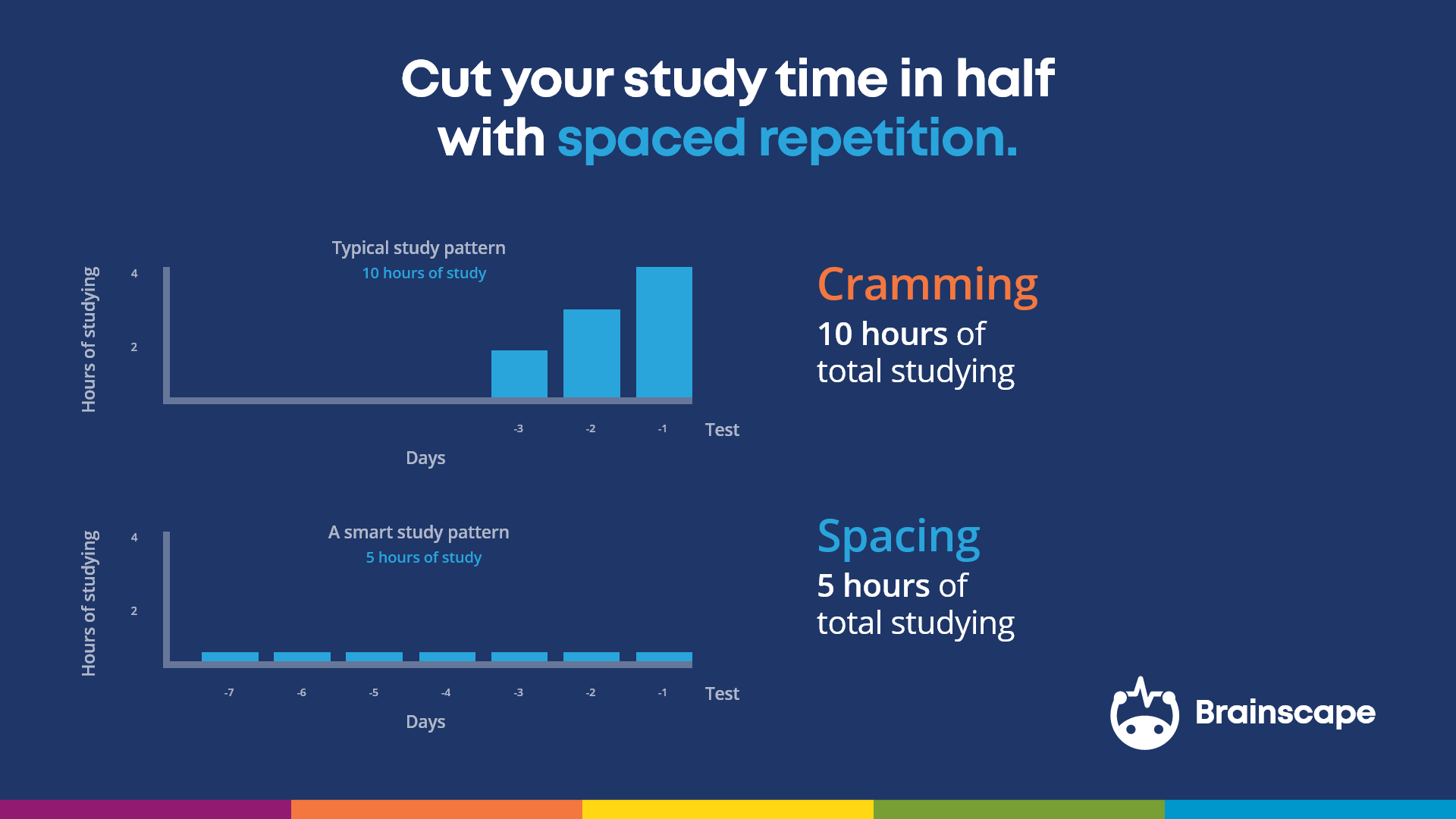If you are taking an online class for the first time, you may find the decreased structure to be somewhat challenging. This is normal. We’ve been trained to sit through hours of in-person classes each day and to have our requirements spoon-fed to us by a live instructor.
The good news is that it is totally possible to not only establish a good remote learning routine from home, but also to learn even more effectively than you did when attending class every day—all while developing stronger self-discipline that will serve you for a lifetime.
Just make sure you’re using the right tools, especially FREE flashcard apps like Brainscape. Below are some tips that will help you make the most of your time learning from home.
(Also make sure you check out our guide 'Top mental strategies for studying at home' for even more awesome advice.)
Essential tips for taking online classes

1. Schedule specific time for learning
If your online instruction is “asynchronous” (not at scheduled lecture times), it can be very tempting to perpetually procrastinate studying, in favor of Netflix and other at-home distractions. You are stronger than that!
To improve your focus and fight the demons of laziness, simply put some time on your calendar for watching your lectures, reading your textbooks, and doing homework problems. And stick to it!
2. Make digital flashcards on the spot
Unlike live lectures, where it’s often difficult to record your notes quickly enough, asynchronous remote instruction gives you more time to mentally process the material you’re learning. Use this flexible time to make flashcards in Brainscape directly from the textbook or videos that you’ve been assigned.
These flashcards will come in handy later, to make your ongoing studies even easier and more effective.
[See our tips for creating great flashcards]
3. Use Brainscape to facilitate “virtual study groups”
Just as students often get together for live group study sessions, today’s online tools make it easy to achieve social learning benefits even when you’re not together.
Specifically, you can use collaborative study apps like Brainscape to spread the work of flashcard creation among two or more students in your class. This will shave time off of your flashcard authoring work while helping you think more critically about the content since your peers will be studying it (and since you’ll be suggesting edits to their flashcards).
[See our tips for how to get your peers to make flashcards FOR you]
4. Study Brainscape flashcards in small bursts throughout the day
While big instructional tasks like reading and watching videos typically require you to schedule dedicated time for them (see #1 above), studying in Brainscape is easy to sprinkle into the rest of your day (particularly if you’re using our iOS or Android app).
[Learn how to study WHILE you exercise!]
This is because bite-sized flashcards only divert a few seconds of attention at-a-time, which makes them perfect to use while you’re watching TV or otherwise relaxing. Be sure to make such distributed studying a daily habit (especially if you no longer have a “commute” to school), so that—by the time you have your next exam—you’ll barely have to “cram” at all.

Cognitive science research has proven that the above study tips for taking online classes will not only help you learn faster, remember longer, and improve your grades, but also that they will require less net study time than traditional passive lecture learning. Our mission is to help accelerate your education so that you can free time for other leisurely or self-development pursuits.
If you have found any other creative ways to use Brainscape to facilitate remote studying, please let us know, and we’d be happy to share it with other students who are adjusting to this transition period.
Best of luck on your continued educational pursuits!
